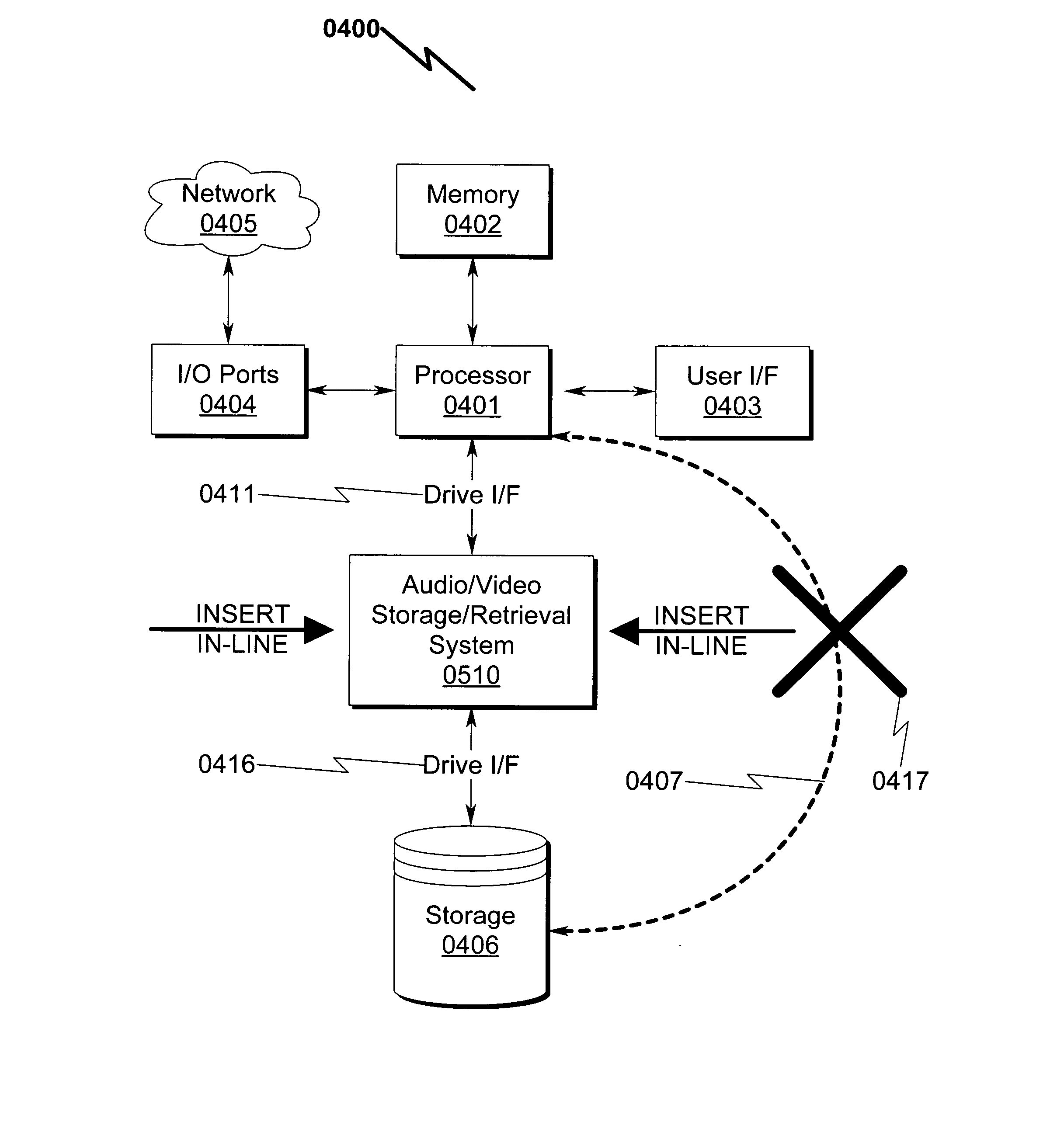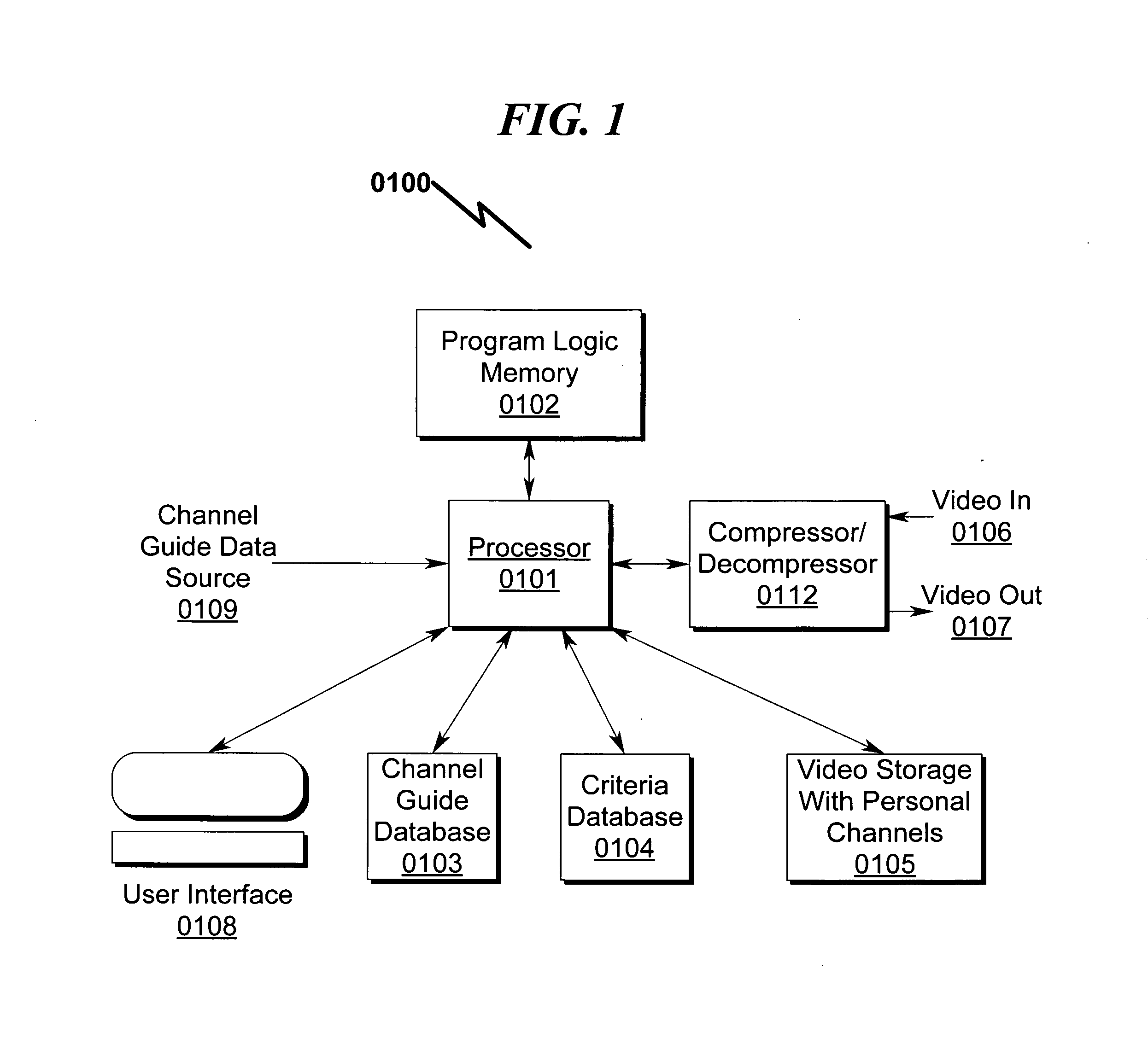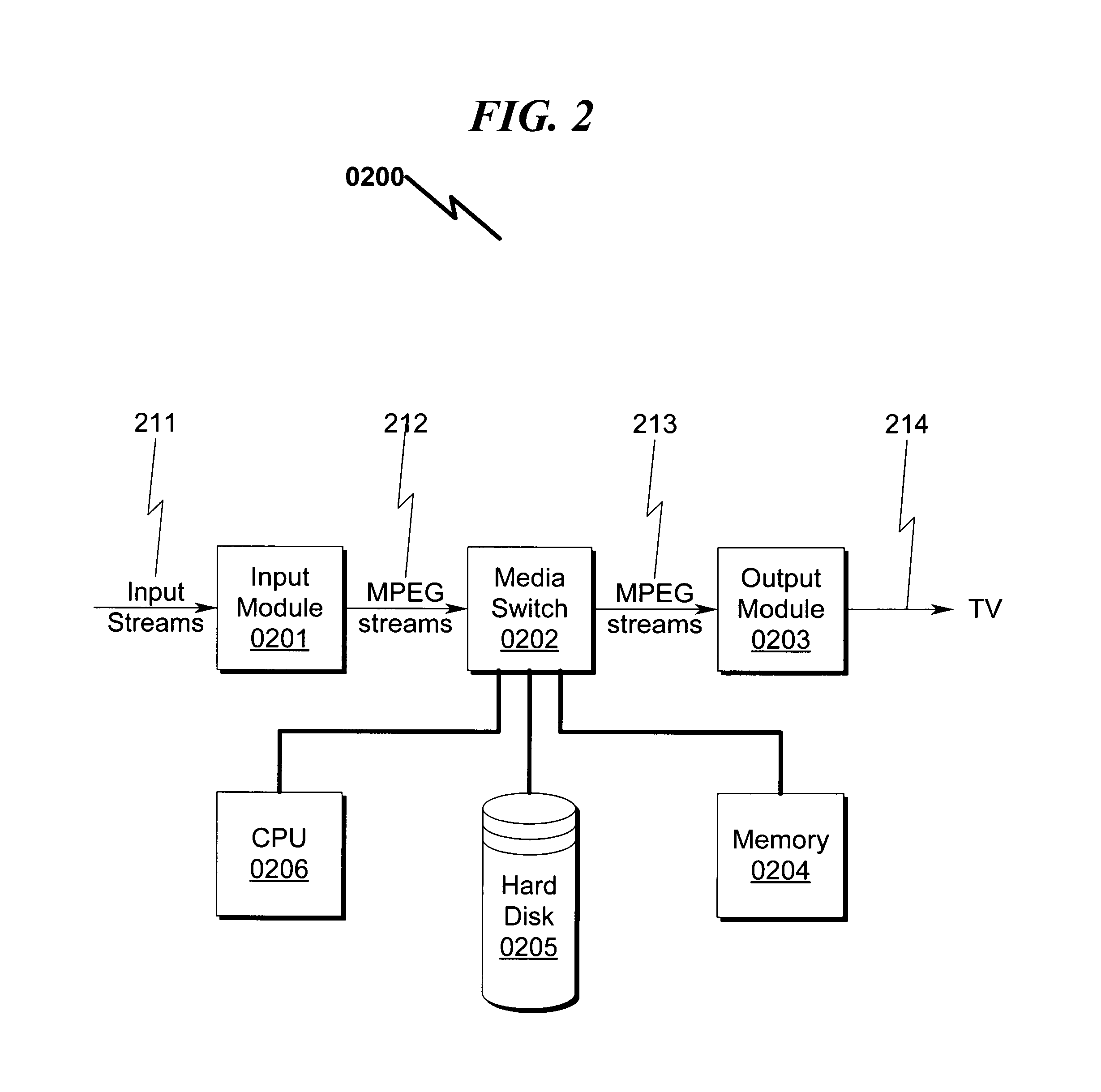A key performance issue in this design is the fact that the processor (0101) represents a communications “hub” between the
video storage (0105) and the compressor / decompressor (0112) engine that processes the video input (0106) and
video output (0107).
Furthermore, the placement of the processor (0101) as a communication “hub” in this configuration limits the number of TV channel pairs that can be simultaneously recorded and displayed to one, as the processor (0101) lacks sufficient speed to
handle hub
data traffic for more than one compressor / decompressor data pair.
Even in this limited situation,
empirical data obtained from systems built using this configuration indicate that the system has bandwidth
processing problems when both the compression and decompression paths (0112) are simultaneously engaged.
While the use of
direct memory access (DMA) and other
hardware acceleration techniques have been used in an attempt to solve this bandwidth performance issue, the results in the prior art have not been entirely successful.
The problem with this approach is similar to that of the other systems discussed.
This is mainly because the
high definition video frames are each much larger than standard-definition frames.” While PVR systems can be implemented using dual
TV tuner cards, the burdens on the processor become unmanageable for systems with more than four tuners, even with integrated video compression on the
TV tuner cards.
Within the context of commercial DVR / PVR systems, typical commercial embodiments are significantly limited with respect to both the recording capability and expandability.
Obviously, for situations that may require a dozen or more TV channels to be simultaneously recorded, the hardware expense for this
problem solution approach would be cost prohibitive in most circumstances.
It should be noted that within the context of all commercially available aftermarket PVRs that there is generally no methodology available to store encrypted video that is available over cable or
satellite receiver.
While there are DVR boxes associated with a wide variety of cable and
satellite providers, there is no current methodology to
record TV broadcast information from these sources outside the context of the content provided DVR hardware for use by the viewer at a later time.
While the viewer may be authorized to view the channels that are not displayed (but nonetheless received), there is at present no “
time shifting” device to permit this functionality.
Currently, without
purchasing additional DVR STB hardware there is no methodology for the
consumer to
record all five of these TV programs, and there is no available hardware capable of recording all five shows within the same hardware storage / playback unit.
This situation presents an especially significant hardship to sports fanatics who desire the ability to
record a number of football or other broadcasts that occur simultaneously, or overlap in time such that recording these events sequentially with a conventional DVR / PVR would not be possible given the limitations of the current
digital video recording arts.
A significant problem in current DVR / PVR technologies is that the source RF
data stream from which audio / video is extracted may be encoded in a wide variety of formats, including
NTSC,
PAL,
SECAM, ATSC (over-the-air (OTA) broadcasts),
quadrature amplitude modulation (
QAM) (both in “clear” and “encrypted” formats), etc.
The prior art as detailed above suffers from the following deficiencies:The use of MPEG compression, while limiting the
video storage requirements of standard DVR / PVR systems (standard video to 1-2 GB / hr;
high definition video ˜5 GB / hr) does not limit the
data rate to a significant level to permit a traditional processor to
handle more than approximately four channels of simultaneous TV recording.Traditional DVR / PVR systems are not capable of recording encrypted video streams (especially in the background), even if the user is authorized to receive and display these broadcasts.
Thus,
time shifting of these broadcasts is not possible with traditional DVR / PVR technologies.Traditional DVR / PVR systems rely on in-house local area networks to facilitate presentation of A / V program content stored on one STB to another STB residing in another room.
The bandwidth of this
local area network can be easily saturated with multiple STB-to-STB remote playbacks.Traditional DVR / PVR systems relying on one STB per A / V presentation device have substantial hardware overhead costs to implement multi-room DVR / PVR architectures.Traditional DVR / PVR systems have difficulty in properly switching recording channels when configured with internal tuners.
This difficulty manifests itself in delays during the channel switch, such that often the beginning time portions of the newly selected channel may not be properly recorded.
This problem is independent of the time-of-day
clock accuracy with the DVR / PVR due to inaccuracies in EPG
programming information.Traditional DVR / PVR systems are incapable of properly handling impromptu changes in the
recording duration of sporting events, especially in situations where the sporting events “run over” their allotted time slots as indicated by EPG data.
While some of the prior art may teach some solutions to several of these problems, the core issue of managing multiple video storage / retrieval streams and their associated data storage has not been addressed.
 Login to View More
Login to View More  Login to View More
Login to View More 


